QMetry is a test management tool that enables users to increase efficiency in managing their testing. Yes it delivers the basics of creating test cases but QMetry also has some clever ways to help with test case reuse.
There are lots of aspects to a test management solution and our side-by-side test management tool feature comparison has identified more than 100 of them. However, there are 7 core and complex features that every test management solution must address in some way.
The 7 core and complex features are:
In the following sections we look at how QMetry addresses each of these 7 features.
The two ways to assign tests in QMetry are based on who developed and who maintains the test case. There’s also the third aspect for assignment in terms of who’s assigned to a particular execution run.
In QMetry, you have the usual REPORTER field on the test case and the ASSIGNEE value. When you add test cases, you'll see the default “assignee” for the cycle is picked up. This isn’t the same as the 'execution assignee'. Once you save, create, and link test cases to the cycle, you'll see that the cycle now has 'Execution assignee' field.
This is important because QMetry assumes you want to track assignment at the cycle level rather than the test case level. That’s fine if it’s an approach that works for you and your team.
Tracking assignment at the cycle level
Version control is reasonably supported in QMetry. You can create a new version of a test case and swap between the different versions, then view the executions for each version. When you create new cycles, you can select the version of the test case in the cycle.
You can also select the version of the test case that you need to use when you edit or link test cases to the cycle. This gives you the ability to include different versions of the same test case in a cycle.
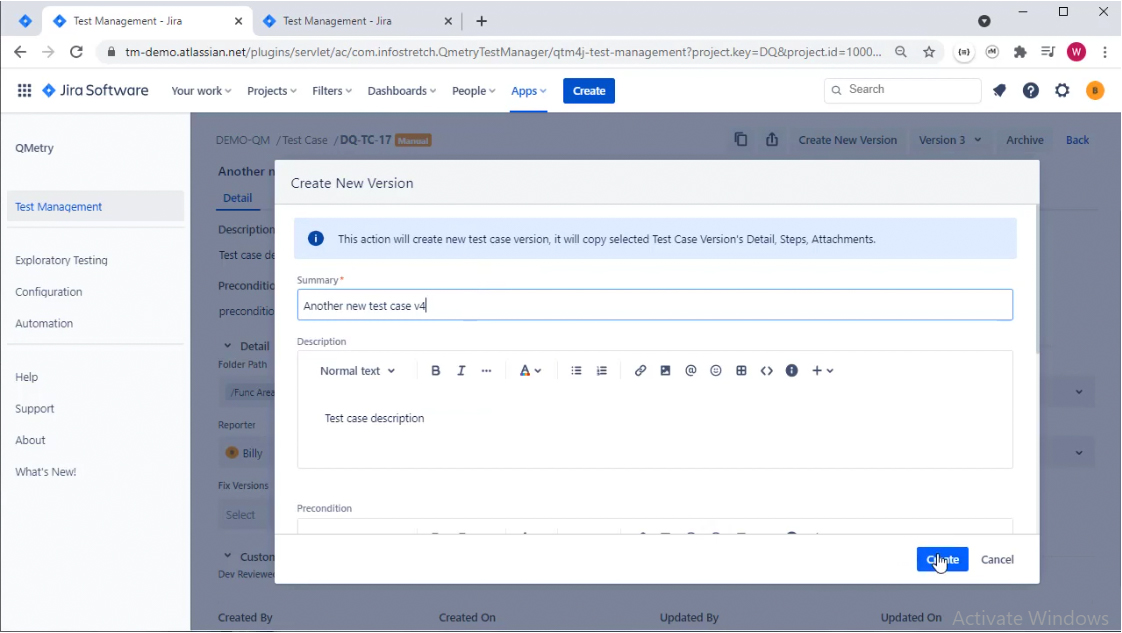
Creating test case version
QMetry supports parameterisation when developing the test cases. It gives the option to configurate the parameters each test case.
For instance, if you have a big project with lots of testers, everyone is going to be modifying and adding parameters. You can control and define parameters all from one place which will help your teams keep things organised.
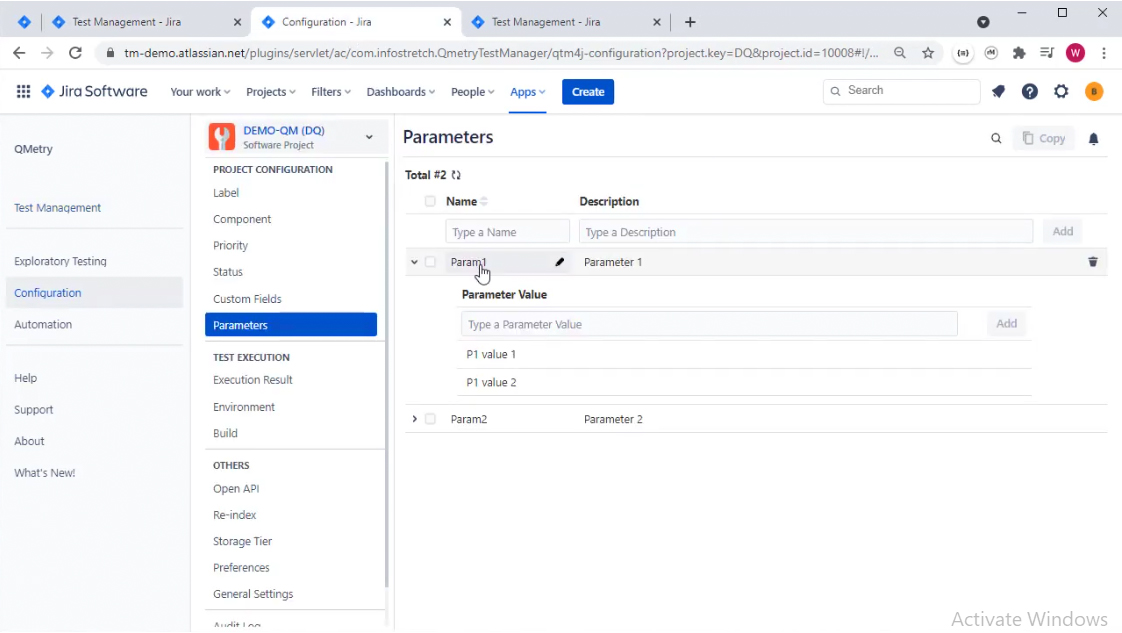
Adding and modifying parameters
With Libraries, you have the ability to build out the repository by folders, add labels, components. You can also group, sort and organise with other user defined meta data. If you right-click on a folder, you can link the whole folder of test cases to a cycle, which makes life easy.
Also, a bulk update capability is provided. This is something that is not available in some other tools. A big advantage if you go with QMetry.
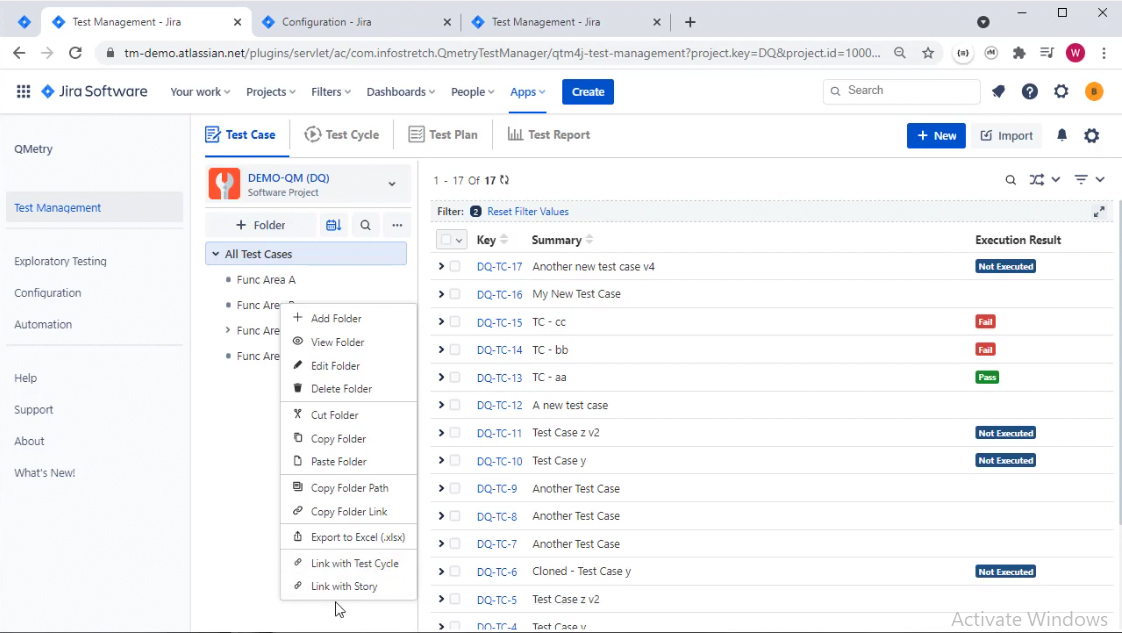
Using components to organize test cases
QMetry allows you to view the last execution result if you display or filter by 'Execution result'. If you have the same test case in multiple cycles (maybe you've run it in sprint 1 and sprint 5), you’ll still see the result from sprint 1 when you only want the result from sprint 5.
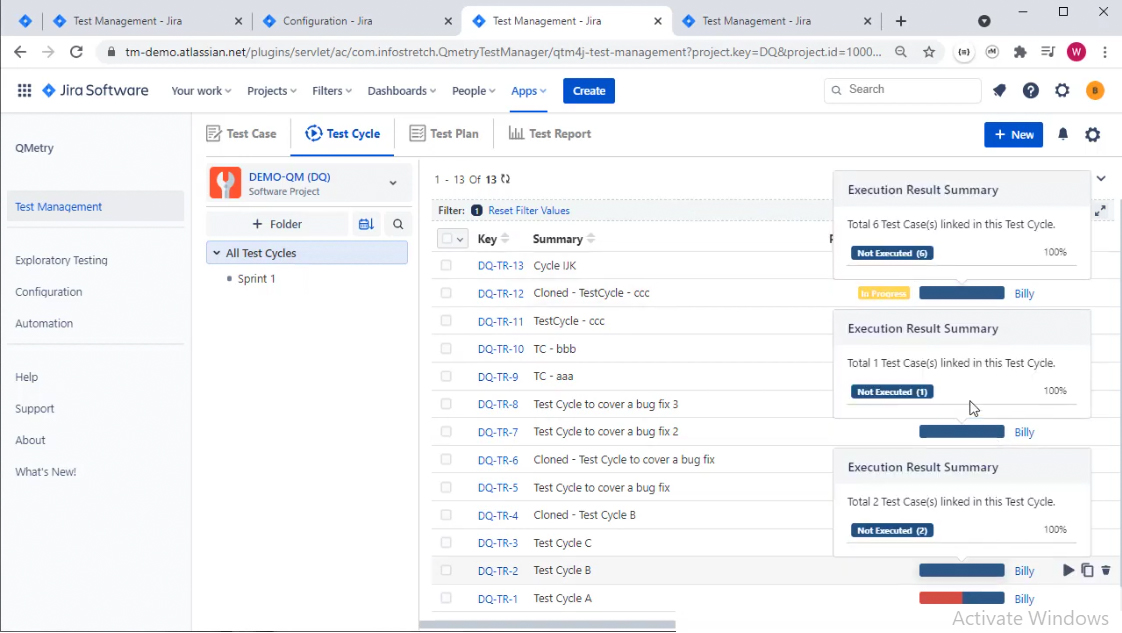
Displaying execution result
You have the ability to identify all the failed test cases, then group them into a dedicated cycles and re-test. You do this with the 'Start a new execution' feature. You could, alternatively, override a previous result in a run. You can also sort or group by status to makes things easier. This means finding all the individual failed results one-by-one and then re-running them.
If you want to find all the failed test cases and add them to a single test cycle, you can filter by last execution result and link to a test cycle.
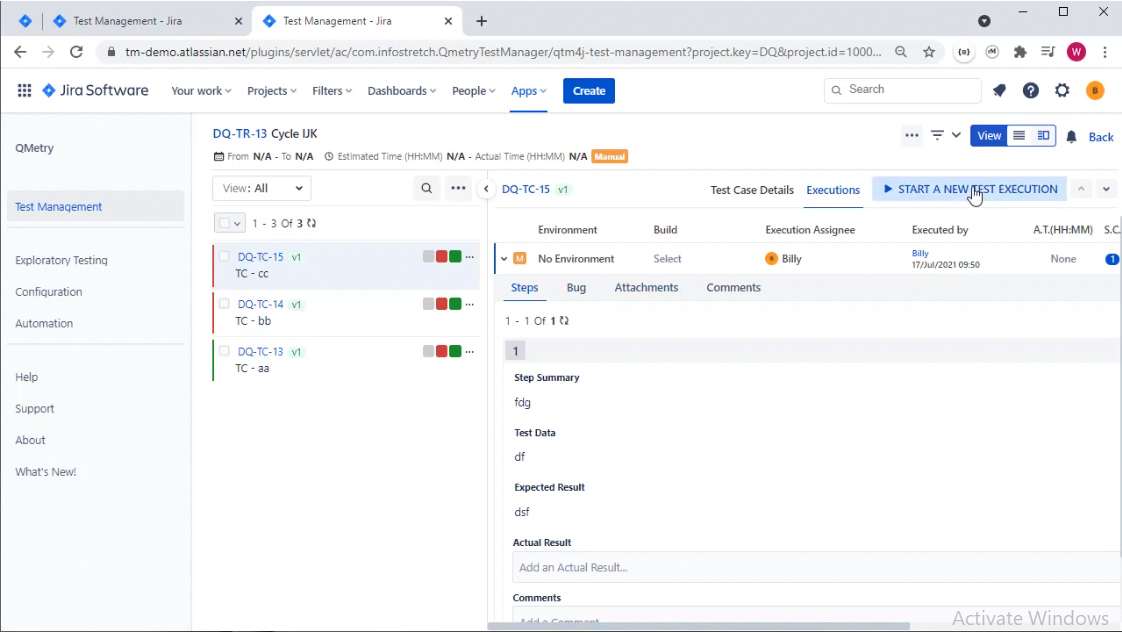
Rerunning a test case
In QMetry, you can track execution results against the config/environment you run in. You can also track execution results against the release, version and builds. In the config area, you can define 'environments' and 'builds', and of course you have the Jira 'versions' field available too.
You can link the cycle into the Fix version that you plan to run the tests against at the test cycle level, and when you run tests in that cycle, you can set environment, and build at the test case level. The “group by” and “sort by” features are very helpful here too.
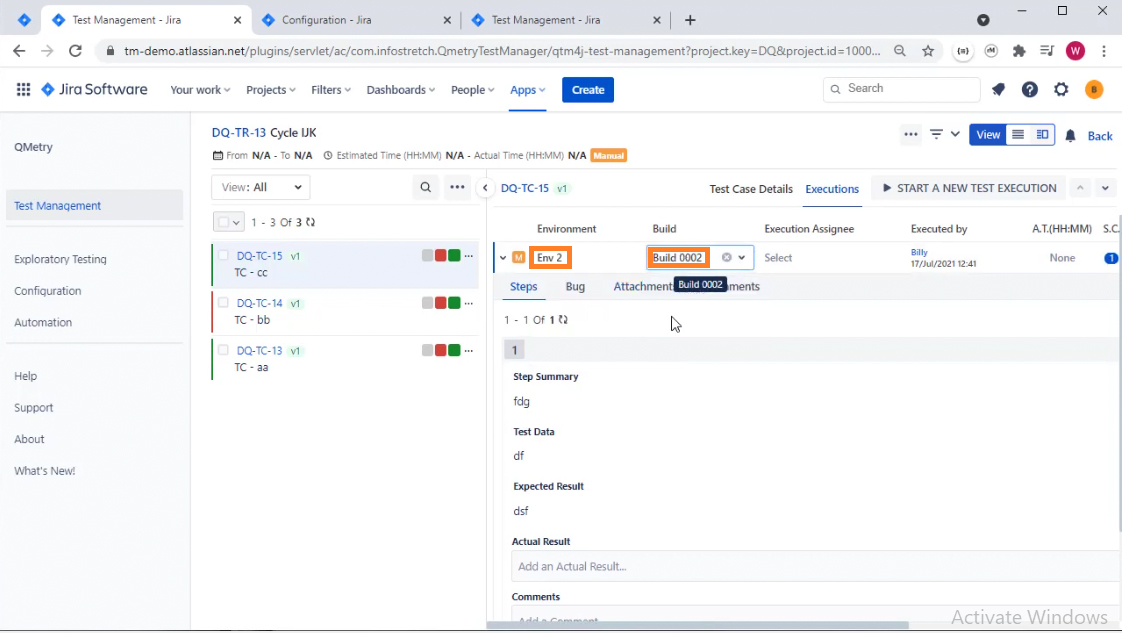
Setting environment and build value within a cycle
The standout aspect of QMetry is its ease of use. What limits QMetry slightly is the fact that you can’t search and filter based on fields that have no value. The concept of Components duplicates what's already in Jira. There’s also no ability to bulk update values/fields during test execution. Having said that QMetry does perform well against the 7 complexities criteria we’re assessed against. A worthy contender in your list of test management tools to evaluate.